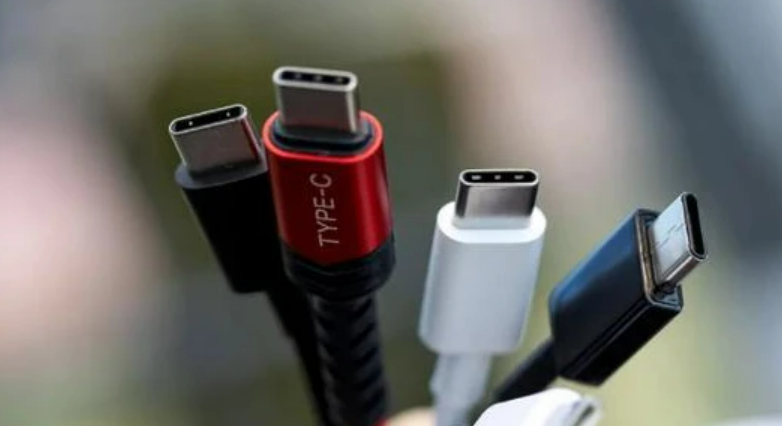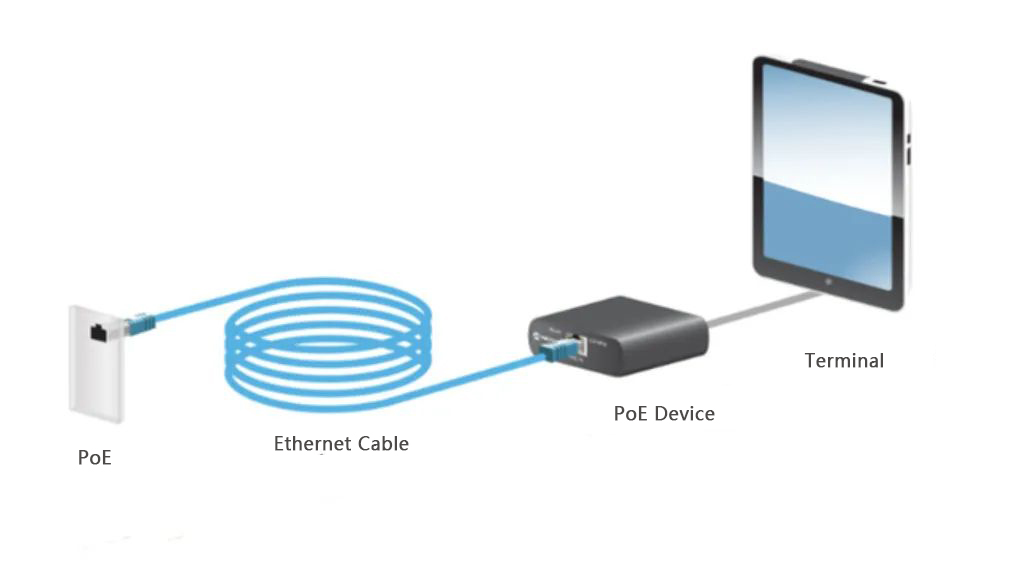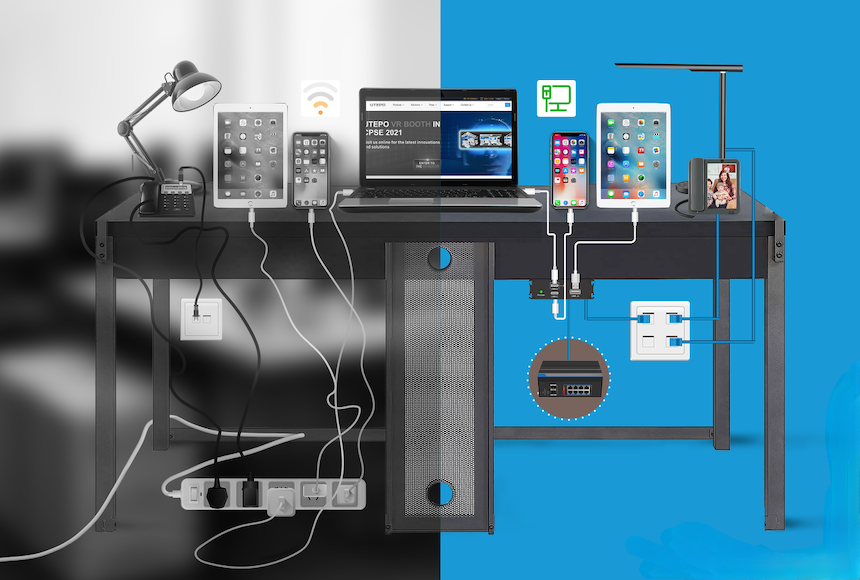Do you feel overwhelmed when the Internet or your phone is turned off? Most of the answers would be “yes.”

With the advent of the mobile internet era, anytime, anywhere Internet access, office, and entertainment have become a way of life. In particular, the spread of the global new crown epidemic, making the home office become the “New Normal.” The needs for charging and internet equipment continue to increase. The ability to provide a fast and flexible online charging experience is related to business efficiency and customer experience with store or home life environment satisfaction.
Surfing Anxieties
With the rapid development of communication technology, people can surf the internet anytime and anywhere by computer, smart phone, Pad and other electronic devices. But at the same time, we in the Internet, charging time, but often have a lot of unsatisfactory.
How often do you encounter these situations?
• As a frequent business trip "workers" in non-office locations to deal with work, if you went to a place without WiFi or with poor WiFi signal, you could only turn on your hot spots to get internet.
• You can not download needed documents due to the slow and unstable internet.
• The power consumption of smart phone is getting higher, and it gets turned off at a critical moment.
• A lot of cables make your desktop messy, which badly influences the visual environment.
So what technologies or products can give us a better experience and make us truly free to use the Internet today, when people require more and more from the Internet and the desktop environment?
Technology Changes Lives
WiFi6 and 5G were published.
Compared with the previous generation of wireless communication technology, 5G and WiFi6 wireless technology transmission speed has improved significantly.
WiFi6 has a theoretical maximum speed of 9.6 Gbps. Thanks to technologies such as OFDMA and MU-MIMO, WiFi6 supports multiple terminals accessing the Internet simultaneously, providing a better experience in a place with a large number of people, Orthogonal frequency-division multiplexing said.

However, to experience full WiFi6 performance, you need to meet the following conditions:
The router supports WiFi6.
The access devices such as mobile phones and computers support WiFi6.
The bandwidth is recommended to be Gigabit or better.
WiFi6 has just come out, the production is low, and the price is relatively high. To these points, the popularisation of this technology is not in a short period, and the opportunity for extensive application is not ripe.
Let's move on to the 5G technology. It is supposed to have a fast transmission speed, quick response time, and wide connection range. In terms of network speed, it has a theoretical downlink speed of 10Gbps, the same as WiFi6’s.

The 5G signal is transmitted by the base station, of which the construction has a way to go. At present, its coverage is far from enough. On the other hand, the through-the-wall capability of 5G is weaker than 4G due to its physical properties. Many users wouldn’t use 5G indoors, according to experience.
Next, operators need to add micro base stations in dense areas such as office buildings and shopping malls, expand 5G coverage, and better adapt multi-device connections. Only after solving the problem of the 5G signal being hard to get indoors can we provide users with a better internet experience.
USB-C rules the cable transmission
At present, the time for 5G and WiFi applications is not yet ripe, and many users still prefer to choose a stable and reliable cable access scheme with guaranteed network speed.
With the gradual departure from the era of wire crystal plug-in, more and more terminal equipment uses USB-C cables to get Internet and charging, such as mobile phones, laptops, etc. The USB-C interface has significant advantages in unifying data cables, supporting the high-power quick charge, data transmission, and meeting the needs of a thinner body, and gradually becoming the mainstream interface for electronic products such as mobile phones.
According to IHS, the quantity of USB-C devices would be up to nearly 5 billion pieces worldwide, led by consumer electronics such as smartphones, tablets, and laptops, which reached 1.685 billion units.

Currently, most electronic devices are still using the USB 2.0 standard. With the release of the USB 3.0 standard, more and more cell phones and computers using the USB-C interface will support the USB 3.0 protocol in the future and significantly improve the data transfer speed.
Power Over Ethernet technology combines network data and electric power with a safe low voltage output.
PoE technology enables the system to pass electric power along with data on twisted-pair Ethernet cabling without any modification of the existing Ethernet CAT.5 wiring infrastructure.
The active PoE provides low-voltage DC power at 44~57V for PD without an additional electrical supply line. While ensuring the security of the existing structured cabling and the network operation, PoE minimizes the cost, such as installation labor costs - that is a licensed electrician need not be employed to make the installation.
As PoE-powered IoT networks expand widely, more and more power-consuming devices are born. Unfortunately, the PoE standard, such as IEEE 802.3at, is only applicable to low-power devices with up to 30W of power through Ethernet and limits the power budget available for intelligent networks and devices, which need to be driven by the power of 60/90W. However, the latest version - IEEE 802.3bt - allows a max of 90W of power to be delivered to a single PD. Today, the semiconductor industry is actively pushing to reduce the power consumption of individual transistors, which allows integrated device manufacturers (IDMs) to do more work with less power. As a result, the industry has more power budget available to PDs, as well as PDs that require less power to do more work. Certainly, laptops and smartphones are parts of them.

UTEPO PoE++ to USB-C Docking Station
To create a better online and charging experience, UTEPO PoE++ to USB-C Docking Station is launched, combining 90W PoE with USB-C technology.
Compared with the common docking station, this product is powered by safe PoE power and converts it to the USB-C signal to charge smartphones, laptops, tablets, etc. It has the characteristics of safety, low voltage, and green energy saving. At the same time, the product adopts USB-C interface technology with fast charging capability and quick transmission capability of video and audio. The interface is small, the compatibility of equipment is strong, the popularization rate is high. And it is very advantageous to the new intelligent terminal layout.

Traditional Desktop VS PoE Desktop
What interfaces the UTEPO docking station provides?
1*PoE++ powered port (90W)
1*RJ-45 port, connect to PC, printer, IP phone, etc
1*USB-C port, support fast charge and Gigabit network
1*USB-C port, support fast charge
1*USB-A port, support fast charge
This product can be widely used in offices, conference rooms, training rooms, cafes, milk tea stores, family desks, student dormitories, libraries and other scenarios that require high aesthetic requirements for the environment and inconvenient wiring, bringing users a better Internet experience and charging convenience and safety.
+86-755-83898016-863
+86-1501-2669-765
[email protected]
Note: To speed up our service to you, please make sure the field with " * " mark is filled before you click on "Submit" button, Thank you!